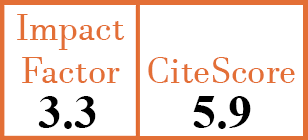Full Papers
Glucocorticoid-sparing effect of first-year anti-TNFα treatment in rheumatoid arthritis (CORPUS Cohort)
C. Duquenne1, D. Wendling2, J. Sibilia3, C. Job-Deslandre4, L. Guillevin5, J. Benichou6, R.M. Flipo7, F. Guillemin8, A. Saraux9
- Department of Rheumatology, Cavale Blanche University Hospital, Brest, France.
- Department of Rheumatology, Besançon University Hospital, and EA 4266, Franche-Comté University, Besançon, France.
- Department of Rheumatology, Hautepierre University Hospital, Strasbourg, France.
- Department of Rheumatology, Cochin-Paris University Hospital, Paris, France.
- Department of Internal Medicine, Cochin-Paris University Hospital, Paris, France.
- Department of Biostatistics, Rouen University Hospital, and INSERM U657, Institute for Biomedical Research University of Rouen, France.
- Department of Rheumatology, Lille University Hospital, Lille, France.
- Department of Clinical Epidemiology and Evaluation, Brabois University Hospital, Vandoeuvre-lès-Nancy, France.
- Department of Rheumatology, Cavale Blanche University Hospital, Brest; and Bretagne Occidentale University, Brest, France. alain.saraux@chu-brest.fr
CER9710
2017 Vol.35, N°4
PI 0638, PF 0646
Full Papers
Free to view
(click on article PDF icon to read the article)
PMID: 28516872 [PubMed]
Received: 29/06/2016
Accepted : 03/01/2017
In Press: 15/05/2017
Published: 13/07/2017
Abstract
OBJECTIVES:
Anti-TNFα agents are indicated in selected patients with rheumatoid arthritis (RA) who respond inadequately to methotrexate and particularly when glucocorticoids are mandatory. We evaluated whether a glucocorticoid-sparing effect occurred during the first year of anti-TNF-α therapy.
METHODS:
Between 2007 and 2009, the French multicentre, longitudinal, prospective, observational, population-based CORPUS cohort included biologic-naive patients with inflammatory joint disease. Patients with active RA treated with glucocorticoids were included. Patients who received at least one anti-TNFα injection during follow-up were compared to anti-TNF-α non-users.
RESULTS:
Among the 205 patients, 76.1% were women, mean disease duration was 7.7±8.3 years, mean DAS28 was 5.2±1.3, mean follow-up was 13.1±2.8 months, and mean prednisone dose was 9.9±9.6 mg/day. The 75 (36.6%) anti-TNF-α recipients were younger, had a longer RA duration, more often tested positive for rheumatoid factor and anti-citrullinated peptide antibody, more often received previous DMARDs, received a higher methotrexate dosage, had fewer intra-articular glucocorticoid injections at baseline and were more often followed by hospital practitioners than non-recipients. Mean prednisone dosage decreased from 11.8±12.7 to 5.9±9.7 mg/day in recipients and from 8.7±7.1 to 5.0±4.4 mg/day in non-recipients. Prednisone was stopped more often among recipients (21/59, 35.6%) than among non-recipients (16/94, 17.0%) (p=0.01). By multivariate analysis, factors independently associated with lower prednisone requirements were baseline daily prednisone dosage, a CRP >10 mg/l and not to be followed by an office-based practitioner.
CONCLUSIONS:
This study showed a significantly higher glucocorticoid discontinuation rate among anti-TNF-α recipients than among non-recipients. However, the glucocorticoid-sparing effect was small and not observed by multivariate analysis.


